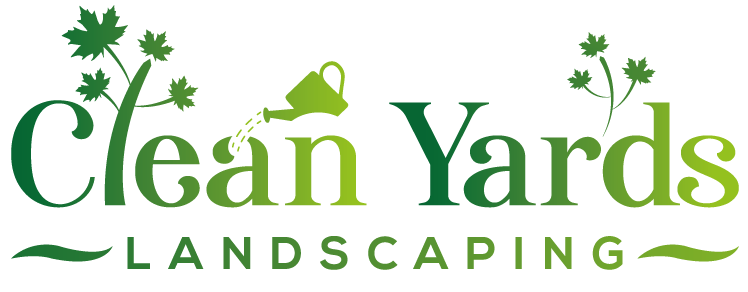Fix Greely Garden Microclimates: Save Plants Summer (53)
Need help understanding and managing your garden's unique needs? Request a free quote today!
Book Your Free EstimateQuick Guide to Fixing Microclimates:
- Microclimates are small areas in your yard with different conditions (sun, shade, wind, moisture).
- Identify them by observing sun patterns, moisture levels, and plant behaviour.
- Heat radiating surfaces (patios, walls) create hot spots; shade creates cool spots.
- Fix problem areas with strategic planting, mulch, shade, raised beds, or windbreaks.
- Choose plants suited to each microclimate ("Right Plant, Right Place").
- Amending soil and smart watering helps manage moisture extremes.
Introduction: Beat the Heat (and Cold Spots!) in Your Greely Garden This Summer
Hello Greely gardeners, and hello neighbours in nearby Manotick and Osgoode! Getting ready to enjoy (and sometimes battle!) another Ottawa summer in your beautiful gardens? We know our local weather keeps us on our toes – blistering heat waves followed by surprisingly cool nights. Ever wonder why that one rose bush sizzles while its neighbour just a few feet away seems perfectly happy? Chances are, you're dealing with microclimates.
Simply put, these are mini climate zones unique to your yard, created by things like the shade from a maple tree, heat radiating off a patio, or even a low spot where cooler air settles. Think of them as tiny pockets of different weather conditions scattered across your property. Understanding these subtle differences is crucial for successful summer gardening and ensuring plant survival when the heat is on (or when an unexpected cool draft appears!). Why sweat the small stuff? Because these "small spots" can make a big difference to your plants' health. Stick with us, because we're about to share some practical landscaping tips to help you identify and manage these zones, beating the heat (and those sneaky cold spots!) this season. You can see some examples of how we manage landscapes in our gallery.
What Exactly IS a Microclimate, Eh? Understanding Your Yard's Mini-Weather Patterns
Okay, let's break down this fancy term, "microclimate." You hear the weather forecast for Ottawa, right? Maybe it calls for a sunny 25°C. But then you notice the hostas under your big oak tree in Greely are cool and happy, while the tomatoes against your south-facing brick wall look like they're auditioning for a role on the sun! What gives?
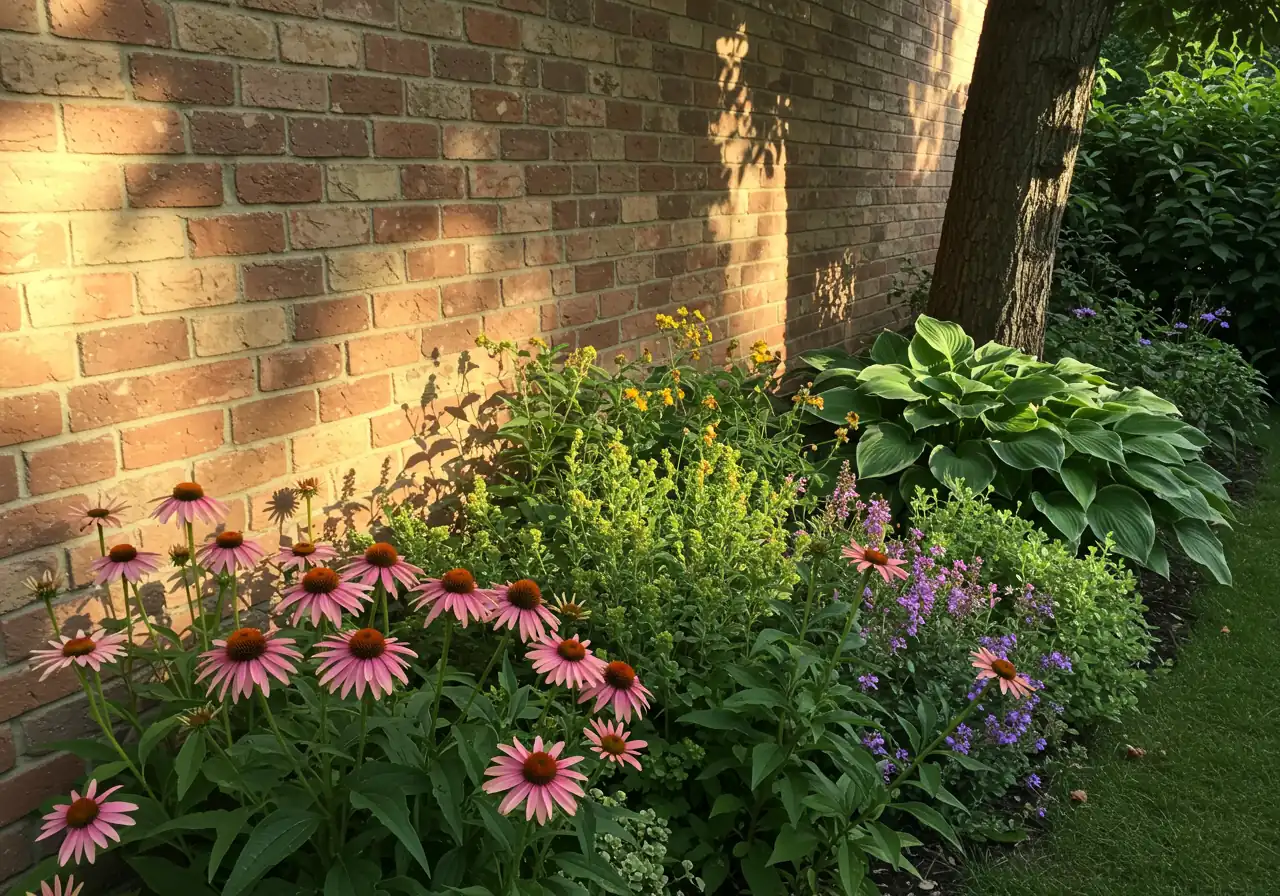
Simply put, a microclimate is a small area within your yard – sometimes just a few square feet – where the climate conditions (temperature, humidity, wind, light) are different from the surrounding area. Think of your yard not as one big weather zone, but as a patchwork quilt of tiny climates. It’s your property's own unique mini-weather pattern, eh?
So, what causes these little quirks? Lots of everyday things, actually:
- Sun and Shade: This is the big one. The north side of your house is cooler and shadier than the south side. The area under a dense maple tree gets way less sun than the middle of your lawn. Planning some Greely tree planting in clay soil this spring? Remember that new tree will eventually create its own shady microclimate!
- Hard Surfaces: Patios, driveways, walkways, even dark mulch absorb heat during the day and radiate it back out, creating warmer spots. Ever notice how snow melts faster near the foundation or pavement? That's a microclimate effect, common in areas from Manotick estates to Barrhaven backyards. Check out our transformations gallery to see how hardscaping influences garden design.
- Windbreaks: Buildings, fences, and hedges can block wind, creating sheltered, warmer zones. Conversely, gaps between buildings can create wind tunnels.
- Slope and Elevation: Even slight dips in your yard can collect cooler, denser air, especially overnight. These low spots might also stay damper longer, sometimes leading to soggy patches if drainage is poor. This is where understanding your ground is key; knowing your Greely fall lawn aeration soil secrets can help manage moisture in these pockets.
- Soil Type: Different soils heat up and retain moisture differently. Heavy clay soil, common around here, stays cooler and wetter longer than sandy soil. This definitely impacts what thrives where, something crucial to consider for projects like our Greely sod installation clay soil lawn guide. Proper soil preparation is key.
- Reflected Light: Light bouncing off walls or windows can intensify sunlight in certain spots.
Understanding these mini-zones helps you put the right plant in the right place, preventing stress. Stressed plants are more vulnerable, so remember to keep Greely garden tools sharp and clean to prevent disease spread, especially if you're moving plants between different microclimates. Paying attention to these patterns is a cornerstone of smart landscaping and gardening. If mapping out your yard's mini-climates feels a bit much, don't worry – figuring this stuff out is part of our Services. See what our customers say on our Google My Business page.
Become a Garden Detective: Spotting Microclimates in Your Greely Property
Alright, aspiring Sherlock Holmes of the horticultural world, it's time to put on your detective hat (a sun hat works too!) and investigate the hidden climate secrets of your very own Greely yard. Finding these microclimates doesn't require fancy gadgets – mostly just your powers of observation and maybe a little patience. Think of it as getting to know your property really well, whether you're in Greely, Nepean, or out near Kenmore.
Your Sleuthing Toolkit:
- Your Eyes and Feet: This is your primary tool! Walk your yard at different times – early morning, blazing noon, late afternoon. Notice where the sun hits hardest and longest. Where does shade linger? Where does the wind seem to whip through, or where is it surprisingly calm? Look closely after rain – where do puddles form, and where does the ground dry out first? In spring and fall, note where frost appears last or melts first. Observing which plants are thriving and which are struggling is a big clue too! Maybe one patch of lawn always looks stressed – could it be a microclimate issue impacting your turf before considering Sod Installation?
- Your Sense of Touch: Feel the soil in different areas. Is it warmer or cooler? Wetter or drier? Feel the heat radiating off a brick wall versus the cool dampness under a large shrub.
- A Simple Thermometer (or Two): Grab a couple of cheap outdoor thermometers. Place one in a known sunny spot and another in a shady spot, or compare a spot near the house foundation to one in the middle of the lawn. Check the readings at different times of day – you might be surprised by the difference!
- Notebook & Pencil (or Phone): Jot down your observations! "Super sunny and hot by the patio after 1 pm," "Stays damp near the back fence," "Wind tunnel between garage and house." This helps you remember the patterns. Our customer portal might be a place to track notes if you work with us.
Common Cases You Might Crack:
- The Toasty Corner: Usually south or west-facing spots, often near heat-absorbing surfaces like patios, driveways, or brick walls. Great for heat-loving plants, maybe too much for others.
- The Cool Zone: North-facing areas, spots under dense trees or overhangs. These areas stay cooler and often moister. Perfect for shade-loving plants.
- The Wind Tunnel: Gaps between buildings or fences can funnel wind, drying out plants quickly. You might need tougher plants or a windbreak here.
- The Soggy Spot: Low-lying areas where water collects or drains slowly. This might indicate a need for improved drainage or plants that tolerate wet feet. Sometimes, accumulated leaves contribute; our Greely Garden Clean Up Service can help clear debris hindering drainage. Similar services are available, such as our Metcalfe garden clean up service.
- The Frost Pocket: Similar to soggy spots, these low areas collect cold air, making them prone to later spring or earlier fall frosts. Tender plants beware!
Map It Out!
Grab a piece of paper and sketch a rough map of your property. Mark buildings, large trees, patios, fences, and slopes. Then, based on your detective work, shade or label the different microclimate zones you've discovered. This visual guide is incredibly helpful when choosing plants or deciding where to place that new garden bed. Keeping your property tidy makes observation easier; a thorough Ottawa Property Cleanup Service or Metcalf Property Cleanup Service can give you a clearer view. Neighbours facing similar puzzles, perhaps those needing a Marionville Property Cleanup Service, also benefit from this kind of detective work.
Becoming a microclimate detective empowers you to make smarter gardening and landscaping choices, leading to healthier, happier plants. If deciphering your yard's climate clues feels overwhelming, remember that understanding site conditions is a key part of professional Services. Happy sleuthing! Check our Terms and Conditions for service details.
Overwhelmed by your yard's quirks? Let the pros handle it!
Get Professional Help With Your Yard AssessmentOttawa Summer Smackdown: How Microclimates Make Heat & Drought Worse
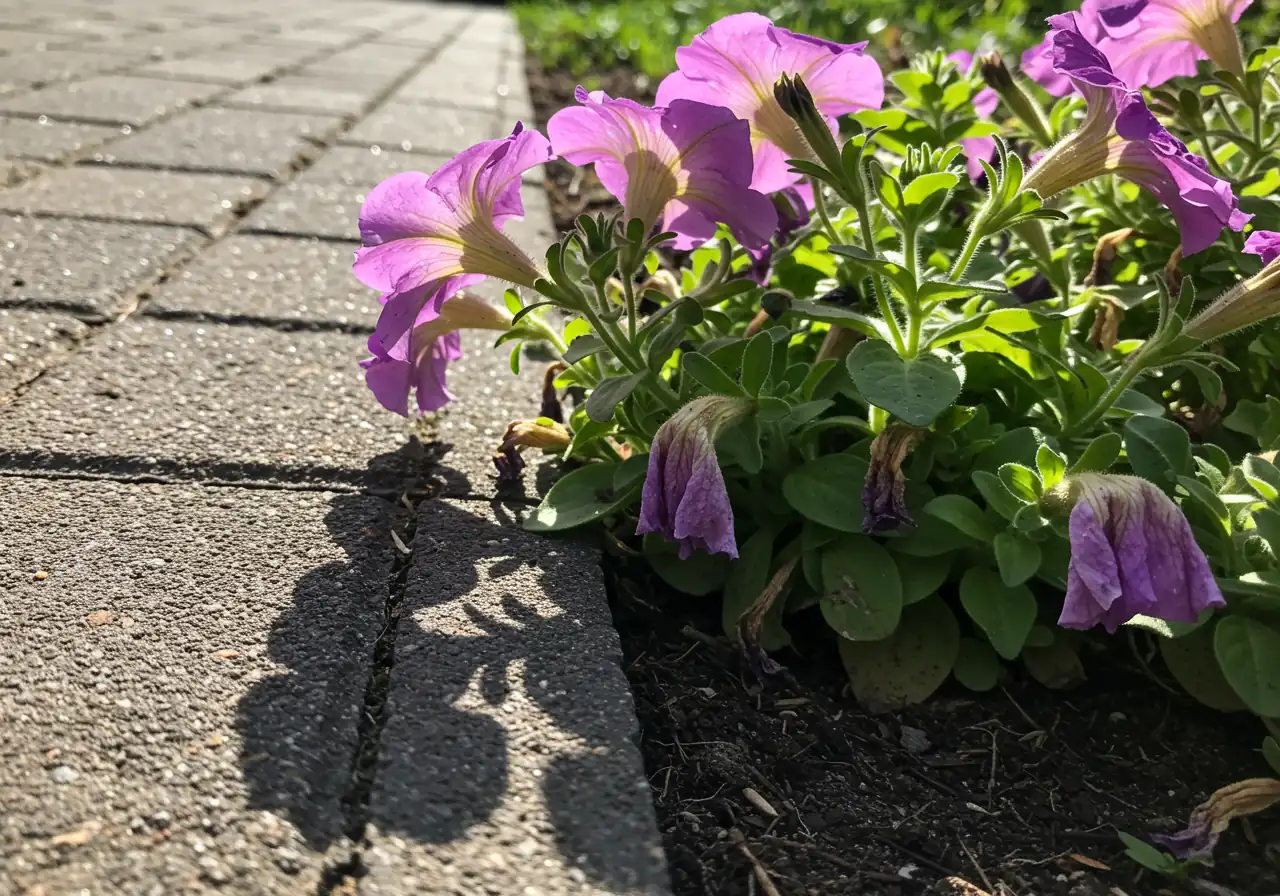
Alright, so we know Ottawa summers can be a bit of a rollercoaster – one minute we're loving the sun, the next we're wilting faster than lettuce in August. And those microclimates we talked about? They can act like mischievous little gremlins, turning up the dial on summer's challenges, making gardening a real workout. Think of it as Mother Nature adding extra hurdles just for fun! Consult reputable sources like the City of Ottawa's Trees and Plants page for general climate info.
So, how exactly do these mini-weather zones gang up with heat and drought?
- Heat Amplifiers: Got a south-facing brick wall or a dark asphalt driveway? These spots already create warm microclimates. When an Ottawa heatwave hits, these areas become supercharged, baking the soil and frying sensitive plants nearby. It's like a double whammy of warmth! This makes choosing the right ground cover crucial; our guide on Landscaping Material Selection explores options that might absorb less heat than others.
- Drought Magnets: That same blazing hot spot will also dry out much faster than cooler parts of your yard. Add a period of drought, and it’s a recipe for stressed-out plants. Around Metcalfe and Greely, where heavy clay soil is common, these dry spots can bake into concrete-like patches that resist water when you do try to irrigate. Windy microclimates, like those funnels between houses, also accelerate moisture loss from leaves and soil.
- Humidity Havens (and Headaches): While heat and drought are big issues, sometimes too much moisture lingers. Sheltered, low-lying spots that don't get much air circulation can stay damp and humid, especially after a rain shower or heavy morning dew. This can unfortunately create the perfect conditions for fungal diseases – not ideal for plant health! Keeping these areas clear of excess organic debris can help improve airflow; it's a common task during work like a Marionville Property Cleanup Service or general garden maintenance.
- Storm Stressors: Those wind tunnel microclimates? They can turn a regular summer storm into a branch-snapping nightmare for plants caught in the crosshairs. Low spots prone to sogginess can experience temporary flooding during heavy downpours if drainage isn't adequate.
City vs. Countryside:
Folks in more built-up areas might notice more intense heat pockets due to pavement and buildings. Out in more rural spots like Richmond or Winchester, you might deal with wider temperature swings between sunny fields and shaded woodlands, or more significant frost pockets in low areas due to open space. The specific challenges shift, but microclimates play a role everywhere. You can see examples of landscapes designed to handle various conditions in our Landscaping Project Gallery.
Understanding how these microclimates interact with our typical summer weather helps explain why some plants struggle despite your best efforts. It's not always you – sometimes it's the spot! Feeling like your yard's microclimates are winning the smackdown? Don't throw in the trowel! You can always Book a Free Landscaping Estimate to discuss strategies tailored to your specific property. And if you ever reach out to us, rest assured we respect your data; you can review our approach in our Privacy Policy.
Operation Garden Rescue: Smart Fixes for Problem Microclimates
Okay, garden detectives, you've identified those sneaky microclimates messing with your horticultural harmony. Now it's time for "Operation Garden Rescue"! Don't worry, you don't need a superhero cape (though a good pair of gardening gloves is essential). We're talking smart, practical fixes to outwit those bossy mini-weather zones in your Ottawa yard.
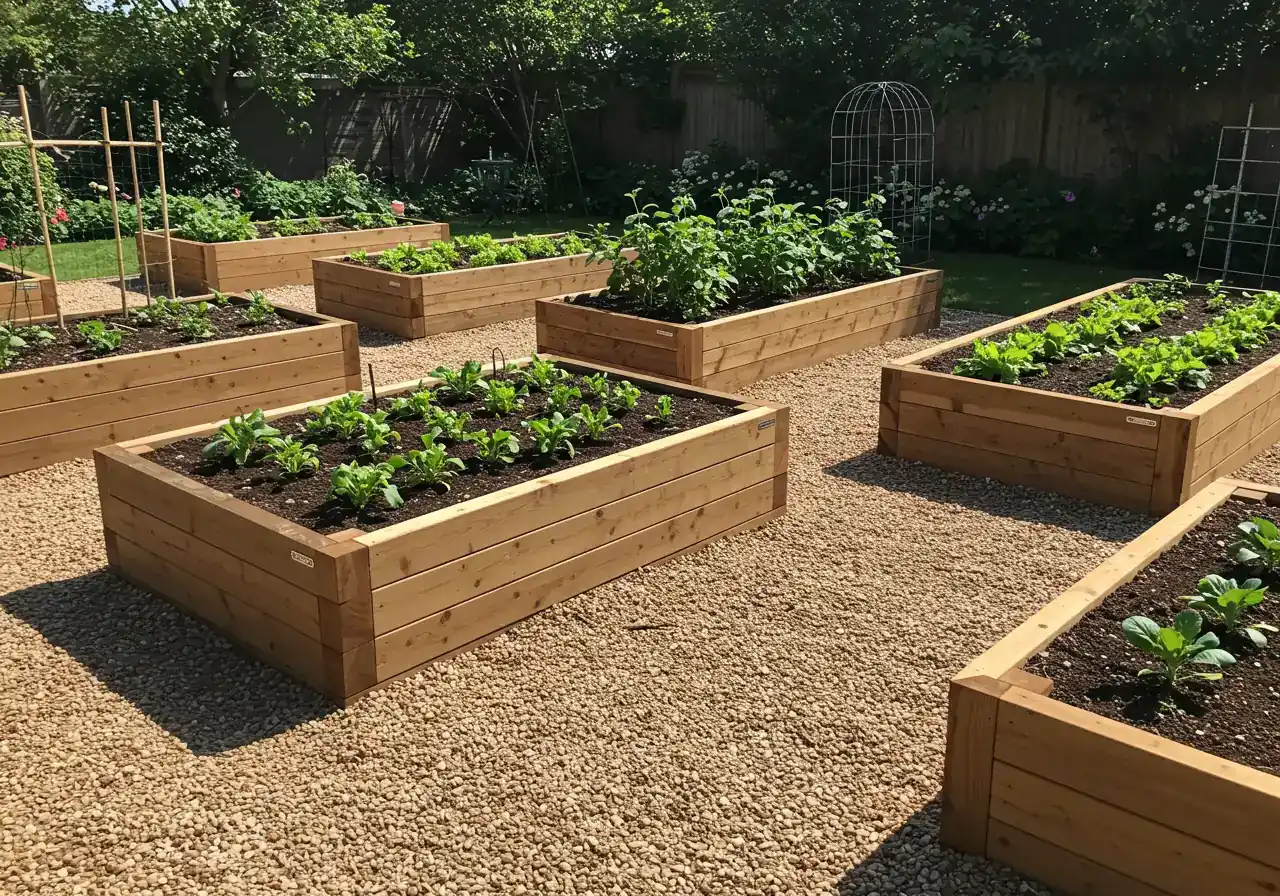
Tackling the Toasty Spots (Hot Microclimates)
Is part of your yard auditioning for a desert movie set? Those scorching south-facing walls or heat-radiating patios need cooling down.
- Throw Some Shade: Strategically planting a deciduous tree can provide glorious summer shade but allow winter sun. Consider size at maturity! Smaller ornamental trees or large shrubs work for tighter spots. Alternatively, install a pergola, trellis with climbing vines, or even temporary shade cloth during heatwaves.
- Mulch Wisely: Dark mulch absorbs heat. Consider lighter-coloured options like cedar or stone, as discussed in our guide to Landscaping Material Selection. A good layer of any organic mulch (2-3 inches) helps conserve soil moisture, which is crucial in hot spots. Check out our mulching and edging services.
- Plant Selection Power: Choose heat-loving, drought-tolerant plants that thrive in full sun. Think Sedum, Coneflower (Echinacea), Daylilies, Lavender, or native Prairie Crocus. Check plant tags for sun requirements – "full sun" means 6+ hours direct sunlight daily. Local nurseries like Ritchies Feed & Seed are great resources.
- Water Smart: Water these areas deeply but less frequently to encourage deep root growth, making plants more resilient. Early morning watering is best to minimize evaporation.
Warming Up the Cold Shoulders (Cold/Frost Pockets)
Got a spot where winter seems to linger, or frost nips tender plants unexpectedly? Often these are low-lying areas or heavily shaded north sides.
- Elevate Your Game: Raised beds are fantastic! They improve drainage (a must for our typical Ottawa clay soil), and the soil warms up faster in spring. This is a great solution for veggie gardens in areas like Greely. We can help with garden installation.
- Choose Chilly Champions: Select plants known for cold hardiness, suitable for Ottawa's Zone 5a/b climate. Think Hostas, Ferns, Astilbe, Bleeding Hearts, or spring bulbs that finish before deep shade sets in. Delay planting frost-tender annuals in these zones until the danger has truly passed (usually late May/early June here). The Master Gardeners of Ottawa-Carleton website offers excellent plant advice.
- Improve Airflow: Sometimes, dense shrubs or accumulated leaf litter trap cold, damp air. Pruning lower branches or clearing excessive ground debris can help improve circulation. This might be part of a seasonal task like a Metcalfe garden clean up service.
- Protective Measures: For borderline-hardy plants, use frost cloth covers on nights when frost is predicted, especially in spring and fall.
Taming the Windy Willows (Windy Areas)
Does the wind whip through a certain part of your yard like it's late for an important meeting? This dries out plants and can even cause physical damage.
- Build a Buffer (Windbreak Time!): You can create a barrier to slow the wind down. This could be a fence, a trellis covered in hardy vines (like Virginia Creeper or Clematis), or a living windbreak of shrubs or trees. Hedges are lovely for this, especially on larger properties like you might find in Kars or Manotick.
Quick Windbreak How-To (Shrub Style):
- Observe: Identify the prevailing wind direction you want to block.
- Choose Plants: Select hardy shrubs suited to your site conditions (sun/shade, soil). Dense, multi-stemmed shrubs work well (e.g., Dogwood, Lilac, Serviceberry). Consider staggered rows for better filtering.
- Prepare Site: Amend the soil with compost to give your new plants a great start.
- Plant: Follow proper planting guidelines for spacing (allow room for growth!). Water well.
- Mulch & Maintain: Mulch to retain moisture and suppress weeds. Water regularly, especially during the first few years. Prune as needed to maintain density.
- Plant Toughies: Choose plants with flexible stems (like ornamental grasses) or sturdy structures that can withstand wind. Avoid plants with large, easily torn leaves in these spots.
Balancing the Bog and the Bone-Dry (Wet & Dry Spots)
Dealing with perpetually soggy ground or areas that dry out faster than a forgotten cookie? Resources from the Rideau Valley Conservation Authority may offer insights into water management.
- Wet Spots:
- Improve Drainage: This might involve adding compost and organic matter to improve soil structure (especially vital for clay!), re-grading the area slightly, or installing French drains (sometimes best left to pros). Ensure downspouts direct water away from the area. Clearing clogged drainage ditches or heavy leaf litter helps too – a common job during a Marionville garden clean up service.
- Plant Thirstily: Embrace the moisture! Choose plants that tolerate or love "wet feet," like Joe Pye Weed, Marsh Marigold, Siberian Iris, or certain Dogwoods.
- Raised Beds Again: Lifting the growing area above the saturated ground works wonders.
- Dry Spots:
- Soil Spa Treatment: Amend heavily with compost! Organic matter acts like a sponge, holding onto moisture much longer. This is key for sandy soils or compacted clay. Learn more about our soil preparation approach.
- Mulch, Mulch, Mulch: A thick layer of organic mulch is your best friend for reducing evaporation.
- Water Wisely: Use drip irrigation or soaker hoses to deliver water directly to the roots with minimal waste. Water deeply when you do water.
- Weed Warfare: Weeds steal precious moisture. Keeping these areas weed-free is important – something often tackled during a Marionville yard cleanup service or Metcalf yard cleanup service.
- Drought-Tolerant Stars: Choose plants adapted to dry conditions (see hot spot suggestions!). Grouping plants with similar water needs (hydrozoning) makes watering more efficient.
Taking on these microclimate challenges turns you from a frustrated gardener into a savvy landscape strategist! It takes observation and sometimes a bit of trial and error, but creating a more balanced environment means happier plants and a more enjoyable yard. If tackling major drainage issues or significant planting seems daunting, remember that assessing and addressing site conditions is part of effective landscaping and general property clean up. You've got this!
Right Plant, Right Place: Choosing Hardy Survivors for Your Microclimates
Okay, so you've played detective and figured out your yard's microclimate quirks. High five! Now comes the fun part: choosing plants that will actually *enjoy* living there, instead of just tolerating it (or worse, giving up the ghost!). The golden rule of gardening and smart landscaping is "Right Plant, Right Place." Trying to force a shade-lover into scorching sun is like asking a fish to climb a tree – possible, maybe, but not exactly ideal for long-term happiness! While Ottawa generally sits in Hardiness Zone 5a/b, your microclimates demand more specific choices for true plant survival.
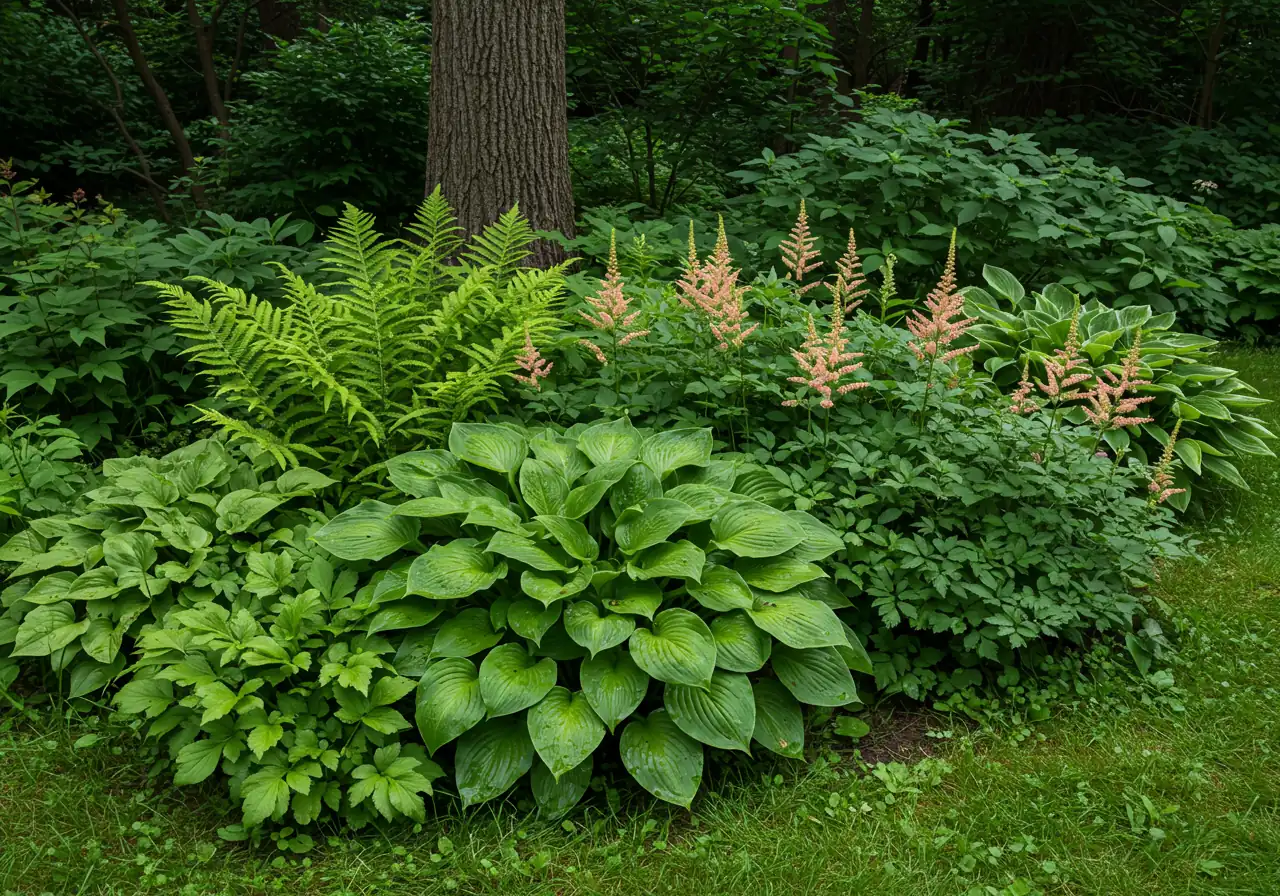
Plant Picks for Hot & Dry Microclimates
For those sunbaked areas:
- Perennials: Sedum 'Autumn Joy', Coneflower (Echinacea), Yarrow (Achillea), Lavender, Coreopsis.
- Shrubs: Sumac (Rhus), Potentilla, Juniper.
- Annuals: Portulaca (Moss Rose), Gazania, Zinnia.
- Grasses: Blue Fescue (Festuca glauca).
Plant Picks for Shady & Damp Microclimates
For the cool, moist grotto:
- Perennials: Hosta, Ferns (various types), Astilbe, Bleeding Heart (Dicentra spectabilis), Brunnera, Ligularia.
- Native Options: Foamflower (Tiarella), Wild Ginger (Asarum canadense), Solomon's Seal (Polygonatum).
- Shrubs: Hydrangea (some varieties), Rhododendron/Azalea (acidic soil needed), Yew (Taxus).
Consistent regular garden maintenance helps these shade lovers thrive.
Plant Picks for Windy Microclimates
For areas exposed to strong winds:
- Grasses: Switchgrass (Panicum virgatum - native!), Feather Reed Grass (Calamagrostis), Little Bluestem (Schizachyrium scoparium - native!).
- Perennials: Daylilies (Hemerocallis), Peonies, Catmint (Nepeta), Russian Sage (Perovskia).
- Shrubs: Shrub Roses (hardy types), Spirea, Dogwood (Cornus sericea - native!).
Plant Picks for Clay Soil Microclimates
Many plants tolerate or even like Ottawa's clay:
- Perennials: Black-eyed Susan (Rudbeckia hirta), Joe Pye Weed (Eutrochium - native!), Daylilies, Hostas, Peonies, Siberian Iris.
- Shrubs: Serviceberry (Amelanchier - native!), Ninebark (Physocarpus), Lilac (Syringa), Weigela.
- Trees: Maple (many varieties), Oak, Hackberry (Celtis occidentalis - native!).
Remember, amending clay with compost during soil preparation is always beneficial.
Native Plant Power!
Whenever possible, consider native plants. They've evolved right here, perfectly adapted to our Ottawa climate extremes and clay soils, plus they support local pollinators. Win-win!
Make a Cheat Sheet:
Feeling overwhelmed? Grab a notebook and make a simple chart. List your microclimate zones (Hot/Dry, Shady/Wet, Windy, Clay) and jot down potential perennials, shrubs, or annuals for each. This personalized list makes nursery shopping much easier!
Choosing the right plants transforms gardening from a battle into a partnership with your yard's unique conditions. It takes a bit of planning, but the results – thriving, beautiful plants – are worth it. The knowledge for these selections comes from experience, like that possessed by local experts like the team described on our About Us page. And hey, if you've identified a challenging spot that needs more than just careful plant selection, perhaps due to excessive leaf litter complicating things, remember that a comprehensive property clean up can set the stage for success. Still have questions about a particularly puzzling spot? Feel free to get in touch via our Contact Us page – we're happy to help your garden thrive! Our estimate process is straightforward, just visit Book a Free Landscaping Estimate.
Visualizing Temperature Differences
Microclimates can lead to significant temperature variations across your yard. This chart illustrates potential differences on a typical sunny summer afternoon:
Quick Wins for Your Greely Garden
Feeling like your garden has a mind of its own? Don't worry, taming those tricky spots doesn't require a landscaping degree! Here are a few simple wins you can score *this week* to make your Greely garden happier:
- Become a Yard Spy: Seriously! Grab your coffee and take a stroll morning, noon, and late afternoon. Note where the sun blazes, where shade hangs out, and where the wind whips through. Knowing your hot and cool zones is key. Got too much clutter blocking the view? An Ottawa yard cleanup service can give you a fresh perspective.
- The Magic of Mulch: Slap down 2-3 inches of organic mulch (like bark chips or shredded leaves) around your plants. Poof! You'll conserve moisture (less watering!), keep roots cooler in the Ottawa heat, and stop weeds in their tracks. Make sure beds are clear of old gunk first; prepping with an Ottawa garden clean up service makes mulching much more effective.
- Read Before You Plant: Sounds simple, but always check the plant tag! Putting a sun-lover in shade (or vice-versa) is setting it up for failure. Match the plant's needs (sun, water, soil) to the microclimate you've identified. This basic step prevents so much gardening heartache! Need help getting the right plants settled in the right spots? Expert help with garden installation services ensures they get the best start.
- Water Wisely (Early Bird Gets the Worm!): Water your garden beds deeply in the early morning. This minimizes evaporation when the sun gets strong and allows leaves to dry out, reducing the risk of fungal diseases. Do this, and your thriving garden will give you plenty of reasons to say 'Thank You'!
- Go Vertical (Sort Of): For stubbornly damp or chilly low spots, consider installing a simple raised garden bed. They drain better, warm up faster in spring, and give you more control over the soil – perfect for fussier flowers or veggies right here in Greely.
Timeline: Tackling Microclimates Through the Seasons
Spring (April-May)
Observe where snow melts last (cool spots) and first (warm spots). Note frost pockets. Amend soil with compost (soil prep is key!). Delay planting tender annuals in cool zones. Plan any spring tree planting considering future shade.
Summer (June-August)
Identify hot/dry zones and provide extra water or shade. Monitor shady/damp areas for fungal issues; improve airflow if needed. Apply mulch to conserve moisture (mulching). Choose plants suited to observed conditions.
Fall (September-October)
Note where frost hits first. Perform fall lawn aeration especially in compacted areas. Clean up excessive leaf litter (property cleanup). Plant spring bulbs, considering microclimates. Protect borderline hardy plants in cold pockets.
Winter (November-March)
Observe snow accumulation patterns – drifts indicate wind direction, bare spots near foundations show heat loss. Plan structural changes (raised beds, windbreaks) for spring implementation. Review notes from the year to plan next season's planting.
FAQs: Your Greely & Ottawa Microclimate Questions Answered
How different can temperatures *really* be within my own yard in Greely or Nepean?
You'd be surprised! On a hot summer day, the difference between a sunny spot next to a brick wall and a shady area under a dense tree can easily be 5-10°C (or more!). This temperature swing drastically affects which plants will thrive. Observing these variations is key to successful gardening in our tricky climate.
My lawn near the driveway always looks stressed, even with regular watering. Could this be a microclimate issue?
Most likely, yes! Pavement absorbs and radiates heat, creating a mini-desert right next to your lawn. This spot dries out faster and gets much hotter. Try watering that area more deeply. If problems persist, specialized techniques might be needed as part of your overall professional lawn care strategy.
What's the *first* step for improving a perpetually soggy spot in my clay-heavy Barrhaven garden?
Before considering major drainage work, focus on the soil itself! Generously amending the area with compost is crucial for improving structure in dense Ottawa clay, allowing better water penetration. Good soil preparation is fundamental for healthy plants. Raised beds are another excellent option for lifting plant roots above the muck.
Does getting rid of excess leaves and debris actually help manage tricky microclimates, like in areas around Metcalfe?
Absolutely! Clearing thick layers of leaves, especially in fall and spring, improves air circulation in damp, shady spots (discouraging diseases) and prevents sunny areas from getting smothered. A tidy yard also makes it easier to spot issues! Consider a seasonal tidy-up, like the work included in a Metcalfe property cleanup service, to keep things manageable.
I've tried identifying and fixing my microclimates, but some plants are still struggling. What are my next steps?
Don't throw in the trowel just yet! Sometimes a tricky spot needs a fresh perspective or a different approach. Share the details of what you've observed and tried – getting personalized advice based on your specific yard can make all the difference. You can easily submit your observations for landscaping estimate feedback to explore solutions.
Conclusion: Enjoy a Happier, Healthier Garden All Summer Long
Phew, you made it to the end! Give yourself a pat on the back – you're now armed with the secret knowledge of microclimates. We've journeyed through identifying those sneaky hot spots and chilly corners right here in your Ottawa area yard, whether you're in Greely, Manotick, or beyond. Understanding these mini-weather patterns is seriously the key to happier gardening and better plant survival. No more wondering why one plant thrives while its neighbour sulks!
Now you can use this know-how to choose the right plants, apply smart landscaping fixes, and finally win the battle against those baffling patches. Imagine less plant-related stress and more time sipping lemonade admiring your flourishing garden this summer. Go on, give it a try! But listen, if that one stubborn spot still acts like it has a personal vendetta against your petunias, or you're dreaming bigger than just fixing a microclimate, don't despair. We love tackling these puzzles. Let us help you create the beautiful, resilient garden you deserve. Ready to enjoy a happier, healthier garden all summer long? Get in touch with us for expert advice and help!
Ready to transform your challenging spots into thriving garden areas?
Contact Clean Yards Today!